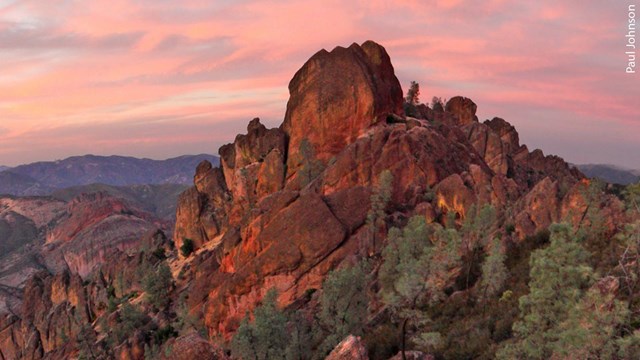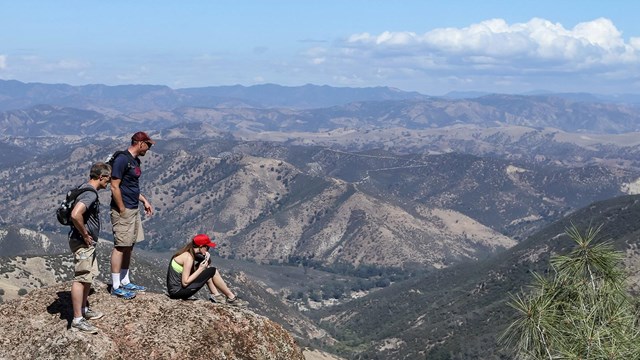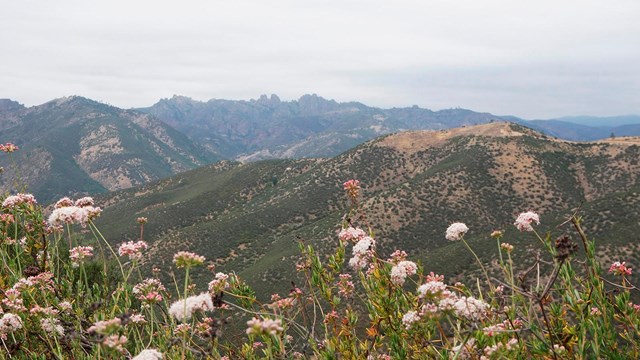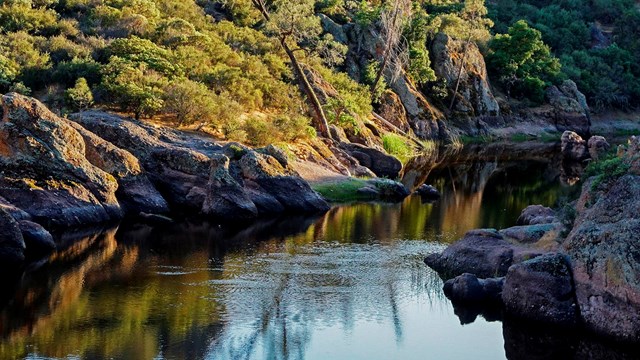The Shaping of Pinnacles: Climate and GeologyThe dramatic landscape of Pinnacles National Park is not only the result of powerful geologic forces but also the influence of a Mediterranean climate with hot, dry summers and cooler, wet winters. Each year, the park’s vegetation transforms as winter rains give way to rising temperatures; lush green hillsides quickly shift to golden brown. The chaparral plants, adapted to these conditions, thrive when fires sweep through, clearing space for new growth. Seasonal streams, dry throughout the summer, swell with water during winter and spring rains, sometimes causing flooding that further shapes the terrain. These dynamic, non-living (abiotic) factors continually influence and transform the park’s landscape, creating a diverse and evolving environment. Explore how these elements come together to shape Pinnacles National Park below. 
Geology
Go back in time and learn how plate tectonics and volcanic activity formed the Pinnacles we see today. 
Climate & Weather
Learn more about the climate and weather patterns that shape the natural environment at Pinnacles. 
Air Quality
While Pinnacles enjoys good air quality now, that may not be the case forever. 
Water & Hydrology
Water plays an important role in the arid environment of Pinnacles. |
Last updated: October 18, 2024
